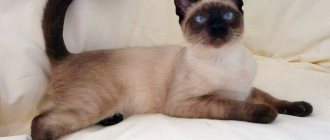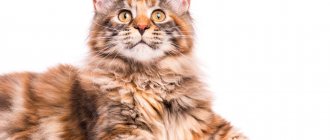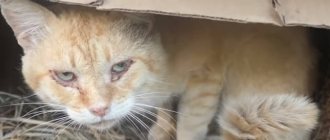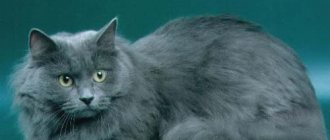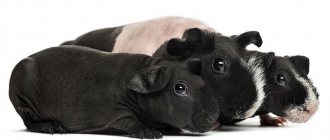Hairless cat breeds appeared not so long ago, so felinologists do not give accurate predictions regarding the age to which such a pet can live at home. It is clear that the life expectancy of sphinxes depends on the conditions of detention, hereditary factors and veterinary care. This means it’s worth learning how to provide proper care and comfortable living so that the cat will delight its owner with its presence for many years.
How long do Sphynx cats live on average?
The average life expectancy of cats of this breed is short and varies on average from ten to twelve years.
The birthplace of the breed is Egypt.
These felines, as historical data say, were revered by the ancient Egyptians, they were depicted on frescoes and vessels. It was the sphinxes that were worshiped as the embodiment of the goddess Bastet. They were valued and respected, they were given gifts and respect.
These animals lived in temples, where they were generously fed and cared for, like pharaohs.
Origin story
In 1966, the first kitten of this breed was born in Canada (but at that time no one knew about it). The newborn boy was the only one naked in the entire litter and he was nicknamed Prune. It was his breeding that made it possible to strengthen the hairless genes. However, at that time, breeders had not yet managed to figure out everything about the mechanism of birth of sphinxes. They looked like a new breed, but it was difficult to figure out how to achieve stability in the offspring.
This question has remained relevant for 10 years. Epidermis corrected the situation. That was the name of the hairless cat who lived in Wadena. Soon another cat of a similar species was born there. She ended up in the Z. Stardust nursery. It is from there that this unique breed takes its start.
Considering the history of this breed, it is worth paying special attention to the black and white cat named Bambi. It was found on the streets of Toronto back in the 70s of the last century.
According to eyewitnesses, he was simply beautiful. Bambi's behavior and character traits fully corresponded to his name. However, this cat was a street cat and suffered more than once due to fights. Due to one of these situations, the poor cat lost one eye and lost the ability to reproduce. Bambi was famous, he lived a very long time and became a centenarian. Fans of this animal celebrated his 19th birthday together.
Appearance. What does the sphinx look like?
The body is long and thin, with developed graceful muscles. The paws are long, slender, ending in a soft, rounded foot. The pads are dark gray or soft pink, pleasant to the touch. The muzzle is pointed, similar to an elongated triangle. The mustache is long, but often thin. The jaw and chin are powerful, the upper jaw protrudes slightly forward.
A distinct line of cheekbones is drawn. The nose is large, regular in shape, slightly flattened on the sides. The ears are truly large, locator-like, with a pointed or rounded edge.
The auditory canal protrudes significantly into the area of the outer ear - the auricle. The eyes are large and lively, occupying two-thirds of the muzzle.
The skin is velvety and soft, normal - without signs of rash or dermatitis. Sphynx skin requires special care.
The musculoskeletal system and skeletal muscles are highly developed, the body is proportional, lean, and of dense constitution.
Weight of adult (age one and a half years and older) pets:
- Male - 8-9 kilograms.
- Female - 6-7 kilograms.
Description of the breed
Don Sphynxes are massive cats with strong bones and developed muscles, soft and warm to the touch with a characteristic feature - the absence of hair. The size of cats is average, with males being much larger than females. Next, we will go through the description of this cat breed in detail.
Head and muzzle
The Don Sphynx has a wedge-shaped head with clearly defined cheekbones and eyebrows. The cat's forehead is flat with many folds that fan out over the eyes. The cat's nose is of medium length, the muzzle is slightly rounded with a slight pinch. The Don Sphynx has strong and large teeth, long upper clicks, which can even peek out from under the lip. Sphynx ears are set high, slightly tilted forward and have rounded ends. Their eyes are almond-shaped, medium-sized, obliquely spaced and slightly closed. Eye color can be any.
Body
The physique is proportional, strong, of medium length. Fairly wide croup. The hind legs are longer than the front legs, slender and proportional to the body. The tail is straight and long.
Skin and coat
The skin is elastic, bare and wrinkled, hot and velvety to the touch. Sphynxes tend to sweat and suffer from acne. Under the sun, the Sphynx's skin tans and becomes brighter. A thick mustache can be of any length or broken off. Wrinkles are desirable on the face, between the ears, around the shoulders, as well as on the legs and belly. A large number of folds should not affect the normal functioning of the body.
In winter, Don Sphynxes may develop sparse soft fluff all over their bodies.
Depending on the quality of the coat, the Don Sphynx is divided into four types
- Hairless (“rubber”, “plasticine”) - implies completely hairless skin. Typically, “rubber” kittens are born naked.
- Velor - the entire body is covered with a thin short fluff, which to the touch resembles the fabric of the same name. As they age, these cats may become bald.
- Flock - the skin is covered with short soft hair, which is almost invisible from afar, somewhat reminiscent of a peach. By the age of two, flock cats sometimes completely “undress.”
- Brush (derived from the English “brush” - brush, bristly) - cats with long, hard and crimped hair. Areas of baldness are often observed on the head, neck and abdomen. Brush sphinxes can periodically “dress” and “undress”, which is associated with many factors (hormonal imbalances, pregnancy, weather, castration and other reasons).
Brushes do not receive titles at shows, but are allowed for breeding. This is due to the fact that in a litter of two completely hairless Donets, weak kittens are usually born, with large mutations and often not viable.
There are no completely hairless sphinxes; residual hair is preserved behind the ears and on the nose, sometimes at the tip of the tail. In addition, a light invisible fluff remains on the skin.
Features of care
Special attention is required to care for the skin of sphinxes, since the lack of hair is not only their unique advantage, but also their greatest disadvantage. The skin of these cats is susceptible to the appearance of pimples, blackheads, sunburn, dermatitis, rashes, and other pathological conditions.
Sphynxes need to be bathed often, even if they are brushed (with little fur). Breeders recommend subjecting pets of this breed to water treatments twice or thrice a week.
Due to the impossibility of bathing procedures, the skin of sphinxes is wiped with a weakly concentrated solution with a specialized, anti-allergenic antibacterial agent for cats.
Separately, feeding, its frequency and frequency, as well as the composition of the diet should be monitored. Excessive feeding of fish will lead to the development of urolithiasis;
meat - to protein poisoning; too frequent and dense feedings risk turning into obesity, which is like death for sphinxes; Rare feeding in small portions often contributes to the development of diseases of the gastrointestinal tract (gastritis, stomach and intestinal ulcers).
What does life expectancy depend on?
Unfortunately, the life of pets is not as long as many owners would like, and Sphynxes are no exception. There are many factors that can prolong or, conversely, shorten the lifespan of these animals. Let's look at the most basic ones.
First of all, experts advise keeping your pet’s weight under control. Cats can overeat if left unchecked, which can ultimately lead to obesity and related problems.
You should choose healthy foods and carefully consider your diet so that it contains the necessary nutrients and vitamins in the required quantities.
Another important factor is cleanliness. This is due to the fact that the cat has practically no hair; accordingly, a specific fatty layer forms on its body, on which bacteria can multiply. Therefore, water procedures are necessary and should be carried out every day.
It would also be useful to use special cleaning compounds.
Cats of this breed also lack protective hairs in the ears, which leads to the active formation of wax. To eliminate wax plugs, which are very harmful to your pet, the ears will need to be cleaned every week.
Bald animals react very strongly to changes in temperature. If the house is cold, the Sphynx can easily catch a cold.
Therefore, you should equip a warm place with a bedding for sleeping, and it would also be useful to purchase a warm blouse for your pet.
Cats are very sensitive to the sun and can even get sunburned. Therefore, it is necessary to protect the animal from direct sunlight.
Sphynx curiosity is an excellent quality, but sometimes it can lead to injury. It is necessary to ensure the safety of the animal and limit its access to dangerous objects.
If you really want to have a Sphynx, but you can’t often be at home and pay enough attention to it, one of the options would be to purchase another kitten of the same breed . Smart cats will enjoy communicating with each other. They also love children very much, most often they calmly go into the arms of guests, and find contact with other pets. Cats prefer to sleep in bed with their owners.
Loneliness is destructive for them and can shorten their lifespan to 7–8 years.
As with people, heredity plays a big role in influencing the life expectancy of sphinxes. The presence of long-livers may indicate that descendants will repeat the fate of their ancestors. If the animal does not have birth injuries, it is spared congenital defects and diseases, it has every chance of a long and happy cat life.
Good immunity is also very important in this regard. Strengthening it is entirely the responsibility of the pet’s owners. It is necessary to provide the cat with adequate nutrition and vitamins, take care of the living conditions and devote the maximum amount of time to the pet.
Character. Attitude towards children and other animals
Sphynx cats are extremely loving cats, but often show their emotions with restraint. In the family, they choose a leader, who receives a significant part of the warmth and affection. These cats are lenient towards other family members, but rarely allow them to approach them. Sphinxes are terrible monogamous people.
These pets love to demonstrate their loud, ringing voice in order to attract the owner’s attention. They are childishly capricious and obnoxious, but at the necessary moments they are loyal and benevolent.
You should not abandon or leave them alone for a long time; they are sensitive to loneliness and suffer when the owner leaves for work.
Sphinxes are wary and jealous of other animals. They require a lot of attention and don't like it when someone else gets it. They can get into fights, but they do this rarely and reluctantly. These cats treat children with warmth, reverence and respect. They will never attack.
They play gently with children, without releasing their claws. At the same time, they are not the best nannies, because it is difficult for them to be in the company of children for a long time.
Sphinxes are wary of other people's children; most often they do not allow them to approach them, but they will not openly attack or enter into confrontation.
As pets, cats of this breed are wonderful: gentle and affectionate, slightly capricious, majestic, friendly.
They do not leave fur around the house, with an indescribable grace inherent only to them, doing everyday things.
Origin story
The Don Sphynx is one of the few cat breeds entirely of Russian origin. According to the generally accepted version, its story began in 1987. A teacher at one of the universities in Rostov-on-Don, Elena Kovaleva, returning home from work, took a cat away from children who were cruelly mocking her.
The woman kept the rescued pet and named it Varvara. After some time, the cat began to have serious problems - she began to rapidly go bald. Elena Kovaleva took her pet to veterinary clinics, where she had many tests done to identify lichen, dermodicosis, and other skin diseases - everything was to no avail. The cat was completely healthy, except for the fact that it had almost completely lost its fur.
White beauty
When Varvara gave birth to kittens from a cross with a European shorthair cat, they turned out to be hairless. The new owners of the babies considered them sick and destroyed almost the entire litter. Only one female was saved.
She was taken in by cat lover Irina Nemykina, fascinated by the “alien” mysterious creature. The woman became interested in breeding work aimed at consolidating the unusual physical characteristics of the baby.
She named the pet Chita because of its unusual paws for a cat, which more closely resembled monkey fingers. It is this cat that is recognized as the ancestor of the Don Sphynx breed.
The path to official recognition of the Donchak was long. At first, people refused to accept domestic sphinxes and considered them a mistake of nature. Then the breeder began giving cats to her friends. Having interacted closely with representatives of the breed, people began to recognize their uniqueness. The fashion for sphinxes grew, their small number and high price turned cats from “strange” into unique.
With the growth of popularity, the problem of a lack of quality individuals arose. Few kittens were born, many of them quickly died. Until the early 2000s, Don Sphynxes were crossed with representatives of other breeds to strengthen the gene pool. They mainly used European shorthair cats, but they also added the blood of indigenous varieties (for example, Siberian).
The first breed standard was registered in 1992. Since 2000, the population has grown, interbreeding of sphinxes has been prohibited. Now they are used only by felinologists to breed new species. International recognition for the Donetsk team came in 1996, when they were recognized by the WCF.
How long do Brush Sphynxes live?
Sphynxes are widely spread hairless cats, but among them there are also shaggy individuals with little fur. Such animals are called brashes. These felines live from thirteen to sixteen years, on average. With rare exceptions, these cats reach the age of twenty years.
- Related Posts
- Find out how many years do Persian cats live?
- Find out how long do Siamese cats live?
- How old do cats grow?
- Find out how many years do domestic British cats live?
- Find out how long Scottish Fold cats live?
- Find out how long Thai cats live?
